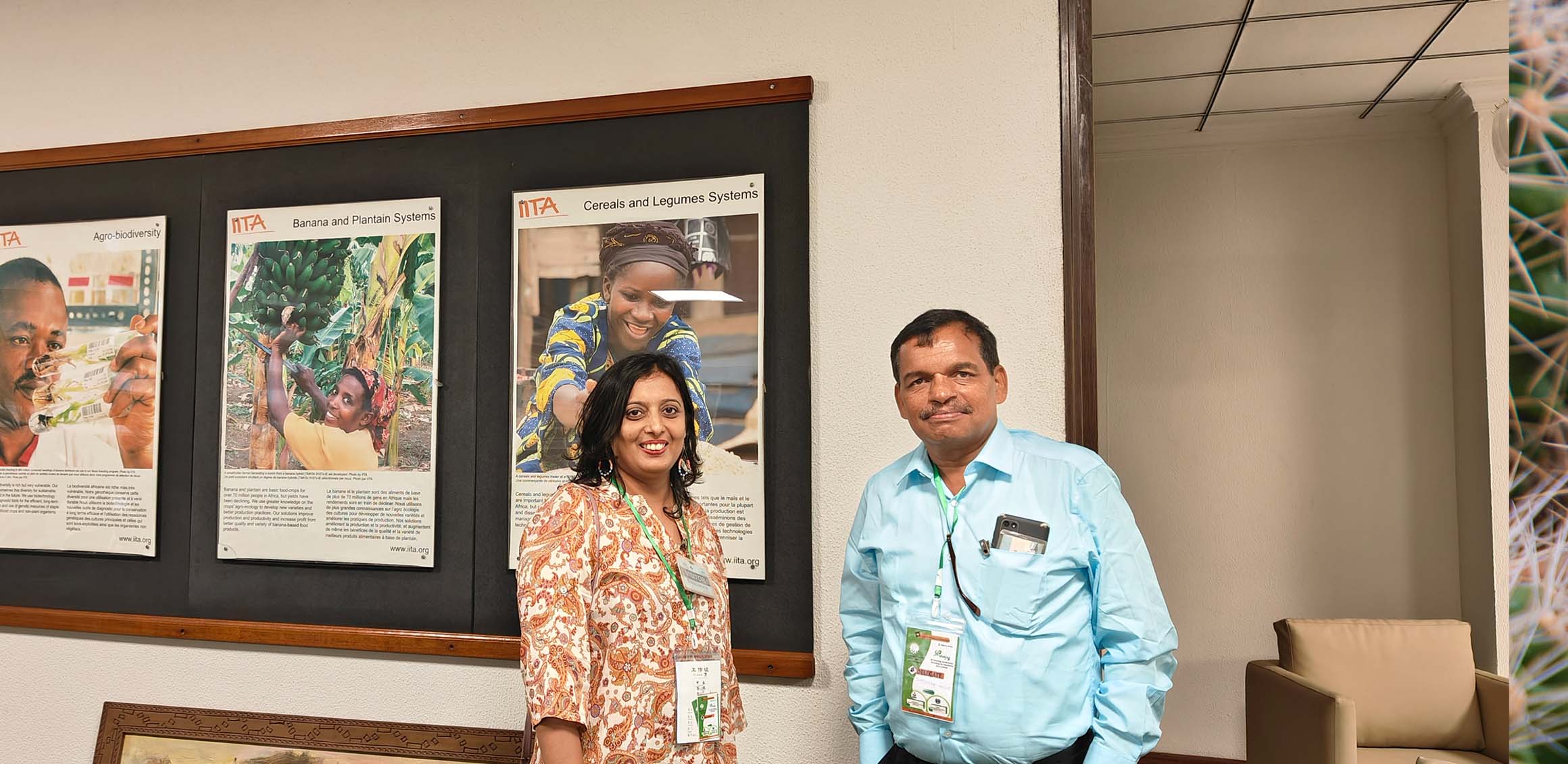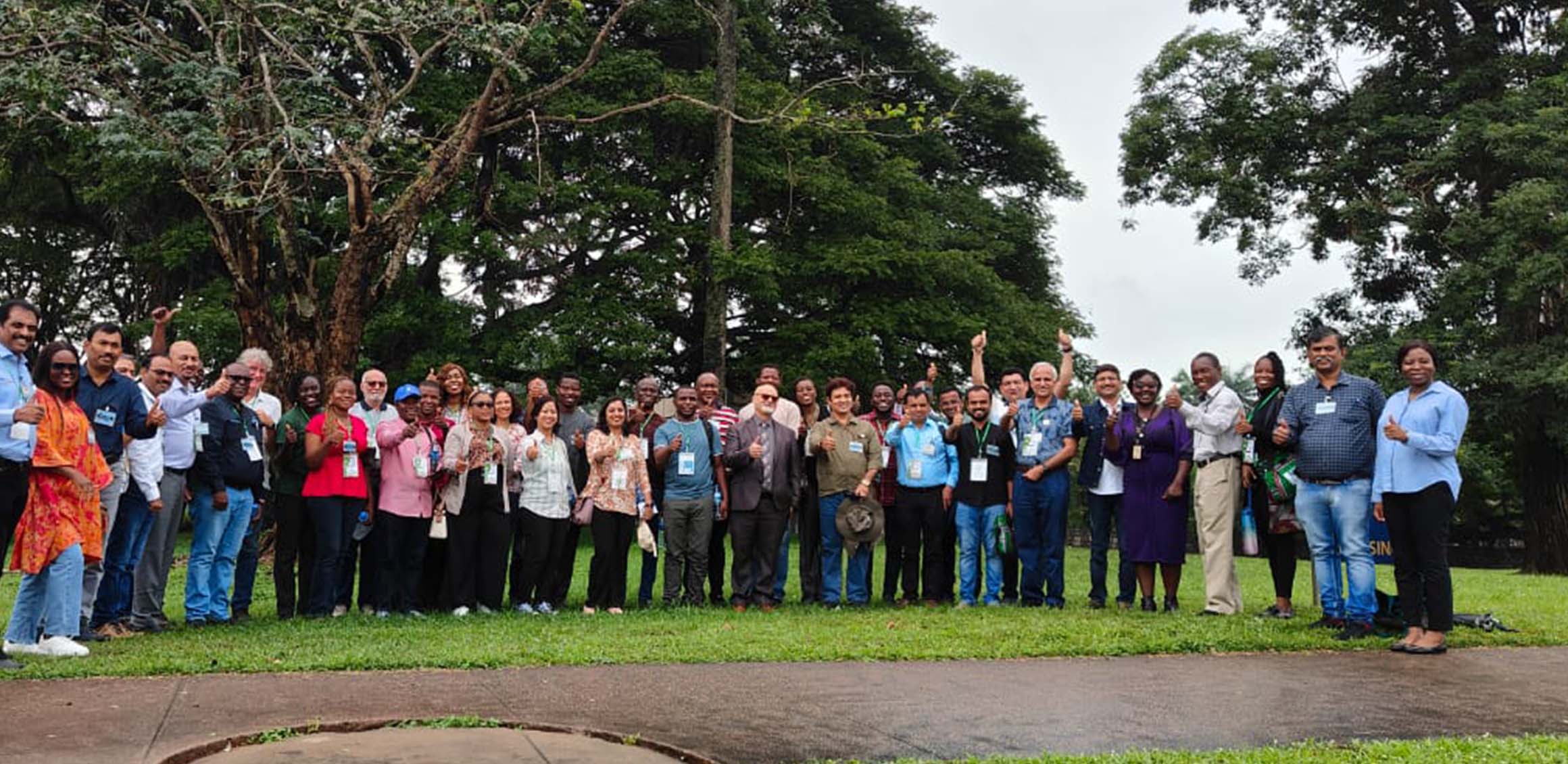Ashwini and Shridhar’s Journey at the Global Okra Round Table 2 Conference
As representatives of INDAM, Dr. Ashwini Samak, Senior Breeder- Cotton, and Shridhar Hegde, Head SBU – Vegetable Crops, both had the honour of attending the Global Okra Round Table 2 conference, which took place in Ibadan, Nigeria, from the 2nd to the 4th of October 2024.
Organised by the Foundation for Advanced Training In Plant Breeding (ATPBR), India in collaboration with the National Horticultural Research Institute (NIHORT) Nigeria, the event offered a deep dive into the okra sector in West Africa. Ashwini expressed her sincere gratitude to INDAM’s management for this incredible opportunity to gain new insights, expand her network, and bring back actionable knowledge too.
Insights on West African Okra
One of the key highlights of the conference was learning about African okra (Abelmoschus caillei), which dominates around 80-90% of the okra production in Nigeria and other West African countries. Nigeria stands as the second-largest okra producer globally, with an impressive output of 1.91 million tons, following India’s 6 million tons.
Okra is not only a staple in West Africa but also a nutritious powerhouse. Rich in dietary fibre, essential minerals like sodium, calcium, and iron, and vitamins A, B, and C, okra plays a vital role in the diet of many. Its seeds contain high amounts of protein (15-26%) and edible oil (20-40%), with linoleic acid being a key unsaturated fatty acid essential for human nutrition. Additionally, the mature fruit and stems are used in the paper industry, and okra mucilage can be used as a food additive, showcasing the crop’s versatility.
Okra in West Africa, particularly in Nigeria, thrives in the rainy season (April to July), with the fresh pods being harvested at 8-12 cm in length, dark green, and known for their high mucilage content. It is sensitive to cold and photosensitive, making its cultivation a challenge in regions with fluctuating climates.
Market Potential for Vegetables
During their stay, they visited both fresh vegetable markets and supermarkets, and it became evident that the market for vegetables, particularly pepper (Habanero type), okra (Clemson spineless and West African okra), tomato, watermelon, and sweet corn, is ripe for expansion. The demand for these crops is high, and there is immense potential for growth in the region, especially as consumer preferences shift towards healthier, nutrient-dense foods.
Challenges Faced by Okra Farmers
While okra is a valuable crop, West African farmers face several challenges, including biotic stresses like jassid infestations, cold sensitivity, and lower yields. Overcoming these hurdles will require a collaborative approach between researchers, seed companies, and local farmers to introduce better-resistant okra varieties.
A Visit to IITA : Exploring Agricultural Innovation
Another highlight of the trip was visiting the International Institute of Tropical Agriculture (IITA), a renowned CGIAR institute. IITA focuses on key crops such as cassava, yam, cowpea, rice, soybean, maize, plantain, and banana, all of which are vital to food security in West Africa. Their discussions with their researchers provided a glimpse into cutting-edge agricultural innovation and how their work can support the broader goals of sustainable farming and food security across Africa.
Attending the Global Okra Round Table 2 conference in Nigeria has broadened Ashwini’s perspective on the future of agriculture in West Africa. It has inspired her to implement new ideas that will undoubtedly contribute to the continued success of INDAM. From understanding the unique challenges of okra cultivation in the region to recognising the untapped potential of vegetable markets, their collective experience has been nothing short of transformative.
It was also a unique opportunity to introduce INDAM to a broader audience, showcasing our unique offerings and commitment to excellence on an international platform.



